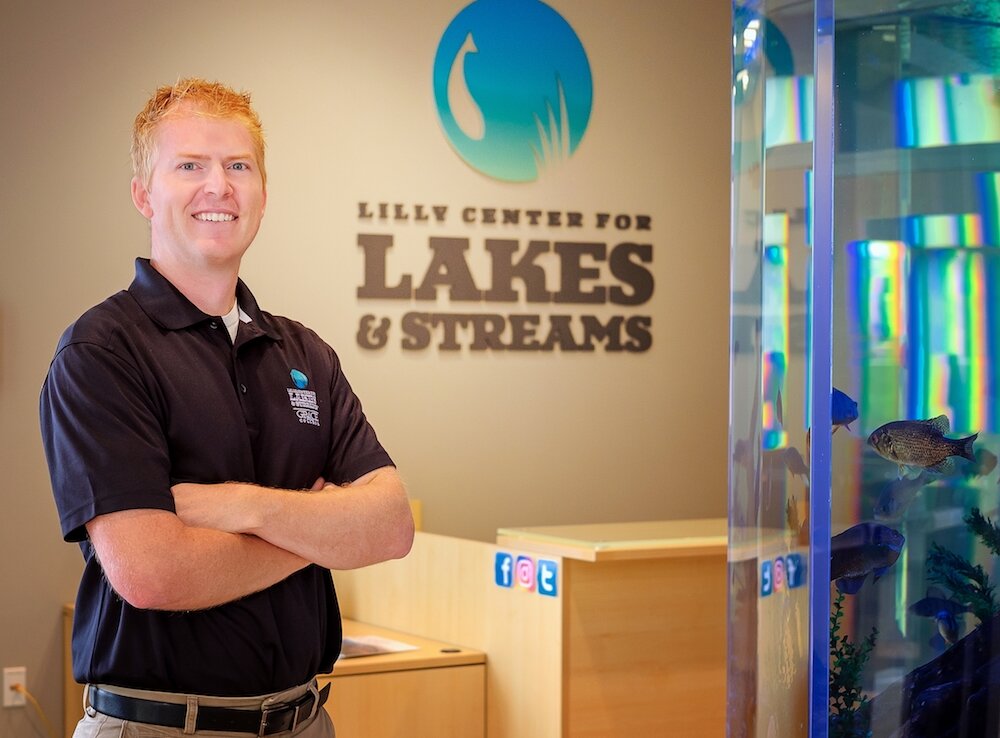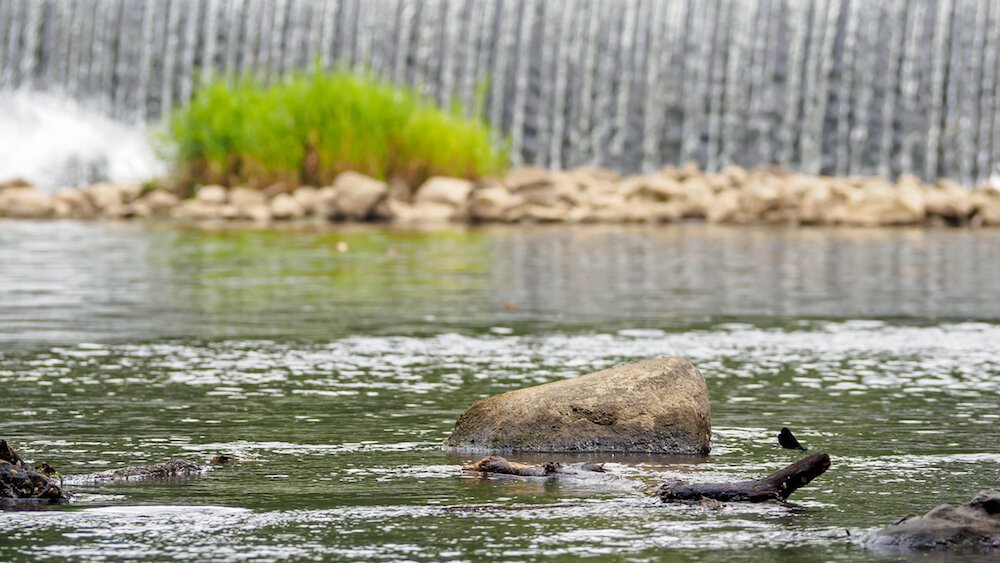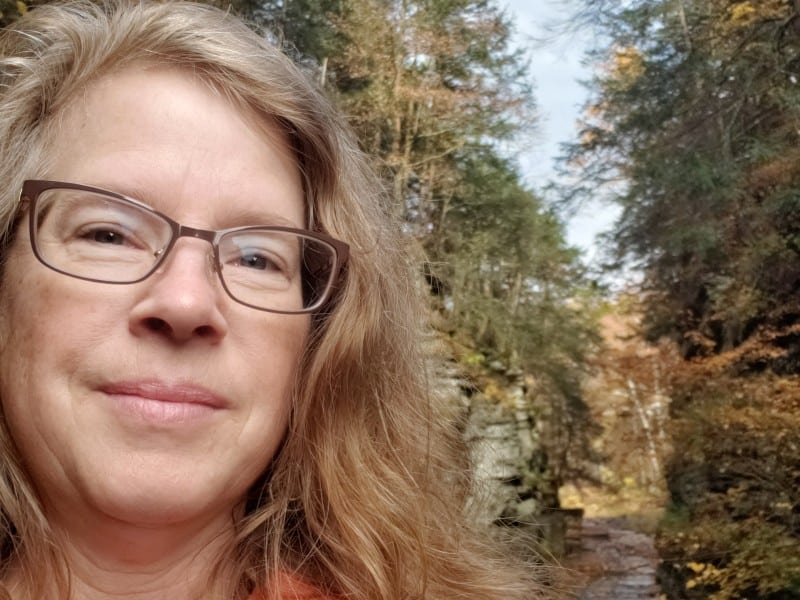How healthy are northeast Indiana’s lakes and streams? Ask the Lilly Center at Grace College
The Lilly Center for Lakes & Streams at Grace College studies and optimizes the health of water ecosystems.

Megan Harris first became interested in waterways when she was a child, and she noticed a creek running behind her house. It spurred her to ask questions about Indiana’s waterways and sparked her love of learning about lakes and streams.
After graduating from high school, she enrolled at Grace College in Kosciusko County, which is home to more than 100 lakes.
As a fourth-year student now, Harris is Research Team Lead for the student cohort at the Lilly Center for Lakes & Streams on campus, where she enjoys learning about waterway conservation, the way lakes work, and—more importantly—translating this critical information to the public.
“In college, my childhood questions about waterways have been answered,” Harris says. “Now I can answer other people’s questions.”

Since 2007, the Lilly Center for Lakes & Streams has been engaging students, community members, and local organizations alike in Kosciusko County with research and educational resources to learn about the area’s waterways. It focuses on improving the area’s water quality for health, safety, conservation, and economic vitality.
After all, Kosciusko County’s lakes have a ripple effect on regional recreation, tourism, and placemaking, notes Nathan Bosch, who is Director of the Lilly Center.

In fact, the total economic impact of lakes to Kosciusko County is more than $313 million annually, according to a 2016 economic impact study conducted by the Lilly Center.
“In Kosciusko County, it’s orthopedics, agriculture, and lakes,” Bosch says.

For instance, in August 2019, Hidden Lake in Warsaw was the site of the USA Water Ski Division I Show Ski Nationals, which brought hundreds of visitors to northeast Indiana to watch and compete in the tournaments.
Many Warsaw-area businesses rely on the lakes for their year-round sales, as well, including marinas, boat dealers, bait and tackle shops, restaurants, lodging, lakefront real estate, and more.
According to a survey by the Lilly Center, one lakeside restaurant reported doing 80 percent of its sales between Memorial Day and Labor Day alone.
“A positive or negative shift in the water quality of these lakes could enhance or severely harm the businesses that are located around these lakes,” the economic impact study says.

It’s these high stakes that have created the need for a collaborative effort to keep Kosciusko County’s lakes in shape. And protecting this powerful natural resource is no small task, Bosch explains.
About 10 Grace College students like Harris work with the Lilly Center to hone their scientific, leadership, and communication skills, where they take part in a variety of tasks, including lab analysis and field sampling.


So what’s threating northeast Indiana’s lakes and streams?
“The No. 1 threat to water quality is too many nutrients coming into lakes and streams,” Bosch says. “When there are too many nutrients, excessive weeds lead to algae growth.”

The sources of these algae-causing nutrients in the lakes are many, including soil runoff from banks and shorelines; sediment from farm fields and construction sites; fertilizer from golf courses, yards, and farms—even human and animal waste from livestock and wildlife.
While rooted plants in bodies of water can cause issues for boat traffic, even more importantly, algae can produce toxins that are harmful to people and pets, Bosch says.

However, the algae-causing nutrients aren’t all bad, he clarifies. In fact, they can contribute to the health of phytoplankton and zooplankton, both of which help feed fish and other creatures that call the lakes home.
“We don’t want to eliminate these nutrients completely because they are part of the food chain,” Bosch says. “But right now, the food chain is overloaded; It’s not working as it should.”

To help right the system and make other waterway improvements in Kosciusko County, the Lilly Center works to educate and equip a variety of regional organizations.
For instance, when the Lake Tippecanoe Property Owners association came to the Lilly Center about flooding due to logjams on the Tippecanoe River, Bosch’s team worked with the association to clean out more than 300 logjams.
“Collaboration is really important,” Bosch says.

Other waterway-oriented organizations that the Lilly Center works with include the Watershed Foundation, the Natural Resources Conservation Service, the Soil and Water Conservation District, Paddlers for Conservation, Army Corps of Engineers, Indiana Department of Natural Resources, Indiana Department of Environmental Management, and Wawasee Area Conservancy Foundation.
But beyond the importance of organizations and students engaging in water quality awareness, what is equally—or perhaps even more—important, is having a region of what Bosch refers to as “water-literate citizens” in northeast Indiana.
It is for this reason that the Lilly Center is committed to educating people in Kosciusko County and beyond about how to take care of their local lakes and streams.

The Northern Indiana Lakes Festival, which takes place each year during Memorial Day weekend, makes the topic approachable to residents and visitors alike with fun, community building, and educational activities.
“More than 6,000 people came to the festival this year,” Bosch says. “About 100 organizations came together to celebrate lakes. It’s our biggest single educational event.”

The Lilly Center is particularly focused on developing the next generation of leaders to understand and engage with lakes and streams.
The Center offers many educational resources for K–12 students, all of which can be used by teachers and homeschoolers. These include Lake Adventure Days, during which fourth-graders fish, build a watershed, and more. There’s also an Aquatic Petting Zoo, which involves the Lilly Center staff taking an aquarium full of local aquatic creatures to kindergarten classrooms, and the Classroom Lake Experience, in which an aquarium that contains local fish is set up in a classroom for an extended period of time.

Last but not least, the Center offers an art contest, which invites students in Grades 4–12 to draw their depictions of local waterways and spark that creative, innovative interest that once caught Harris’s attention.
“Our goal is to reach 1,000 students this year,” Bosch says.










